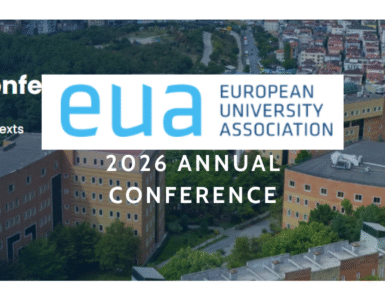by Mary Godfrey, Harvard University, USA.
At the end of the 2023 fall semester, my team at the Office of the Vice Provost for Advances in Learning (VPAL) set out to produce a set of short videos focused on the use of Generative AI at Harvard University. The effort involved interviewing several faculty across schools and disciplines remotely over Zoom, and editing each interview into clear, informative clips. The goal of our project was twofold; to better understand how Generative AI tools were changing the way Harvard faculty and staff teach, learn, research and work at the University, and to provide a shared resource for faculty and staff to learn from each other. All of the videos now live as a gallery, “Faculty Voices,” and are publicly available on a central website at Generative AI @Harvard.
Background
The Office of the Vice Provost for Advances in Learning (VPAL) is a part of the Office of the President and Provost, a central unit in an otherwise decentralized University. Our work focuses on a range of activities (such as creating online course content and developing university-wide programs) meant to drive pedagogical advances and disseminate actionable resources. Below is a flywheel representing the key areas of our work. Each segment of the wheel — Create, Enable, Measure, Innovate, relates to the central idea of what we do. Connect and Learn.

Producing these videos was one way we delivered on that central mission this past year — connecting faculty from different schools via a digital outlet (a university-wide website) and providing them with a way to learn from each other about the ways in which their peers have experimented with Generative AI in their curriculum.
Producing 35 Short Videos
The videos are straightforward enough, but like most efforts in production it took a team to make it happen. Colleagues from the Harvard Initiative in Learning and Teaching (HILT — another group within VPAL) recruited the faculty to share about their experimentation with generative AI in their teaching (for example, an assessment strategy, new approach to group work, community-building technique, ways to make online learning experiential, etc.) and coordinated scheduling. Over the course of 4 weeks, we conducted 35 interviews, each approximately 30 minutes long, asking the same four prompts of each person we interviewed:
- Briefly, introduce yourself and your course.
- What was the problem you were trying to solve?
- What did you do? (Demonstration)
- What did you learn?
Our videographers managed the remote filming. Along with our editor and designer, we worked together to edit the interviews for brevity and clarity, bringing visual interest with design and graphics where appropriate.
For each interview, we asked faculty to bring with them something they could show so we could see their innovation in action. The result — a diverse collection of 3–5-minute videos capturing the many experiments, innovations, and insights across 8 of the 12 schools at Harvard University.

Project Takeaways
As my team worked to put this collection together, I noticed a few themes emerge, which I captured below with specific examples.
AI as a thought partner, not a substitute
Richard Schwartzstein, Professor of Medical Education at Harvard Medical School, used AI to highlight the importance of deep analytical thinking. In his video, Schwartzstein, a pulmonary care doctor, demonstrated how he prompted Chat GPT with a case with a patient with lung disease and heart failure. The point of this exercise was not to show off where Chat GPT could arrive at an answer faster as one might expect, but to demonstrate to students where Chat GPT got it wrong. By demonstrating AI’s limitations in medical diagnostics to students, he emphasized the value of human judgment. These tools are useful to a point, but the larger value was in showing students AI’s limitations, to show they cannot simply rely on the results Chat GPT delivers. Students, Schwartzstein points out, still need to develop logical reasoning and critical thinking skills.
AI can help facilitate active learning
In her French language class, Nicole Mills, Senior Preceptor in Romance Languages and Literature at Harvard Faculty of Arts and Sciences, has her students create memoirs for fictional characters based in Paris. She then brought these narratives to life through visualizations capable of interacting with students, and invited students to engage in dialogue with their characters using AI prompts. Engaging in immersive interrogation and problem-solving in French, students applied their language skills in a dynamic, interactive setting, enhancing their linguistic proficiency.
AI can enhance engagement for in-classroom teaching
Mitch Weiss, the Richard L. Menschel Professor of Management Practice at Harvard Business School, developed an interactive class exercise using AI to solve a real-world traffic issue. In doing so, he showed how AI can stimulate student’s problem-solving skills. This method could be useful in disciplines like public policy or urban planning, where creative solutions to societal challenges are needed.
AI and custom tutor bots
Over the past year, several faculty engaged in the development of tutor bots to facilitate student’s learning both in and outside of class. For example, Sharad Goel, Professor of Public Policy at Harvard Kennedy School of Government, built a custom AI Slackbot, “StatGPT,” to encourage students to learn through interactions with the AI, rather than AI providing direct answers. Goel’s work has led to the creation of PingPong, a multi-agent tutor bot generator now more broadly used across the Harvard Kennedy School of Government. This approach could be beneficial in subjects that require active problem-solving and shows how AI can guide but not replace the learning process.
What Now?
The Faculty Voices project represents one of many activities focused on AI in teaching and learning our teams at VPAL are engaged in. In addition to producing updates to the video collection, our colleagues at HILT continue to support the work of a university-wide AI task force. We continue to collaborate with schools and units to convene faculty and staff to share out on initiatives and developments on the use of AI in education. More recently, our office published a system prompt library, sets of structured inputs that guide an AI’s responses — for people who are creating their own custom GPTs, such as chatbots, AI tutors, and AI course assistants.
Some Final Thoughts
One of the benefits of a liberal arts education is the way in which ideas from one discipline can connect and be applied to another. This interdisciplinary approach fosters a rich learning environment, allowing for diverse perspectives and innovative solutions. I would like to believe these videos provide an opportunity for people to connect with an idea from a different area of study. For instance, educators looking for strategies to promote active learning might draw inspiration from Nicole Mills’ use of AI in her French language class or Dan Levy’s video on how he utilized AI to assess student learning and enhance classroom interactivity. These examples highlight how tools, when applied across different fields, can offer valuable insights and foster creative outcomes.
As Liao Cheng, Lecturer on Education at HGSE, aptly puts it in her video, “It’s more important to think of these tools in these new technologies in the context of something that is not new…the essence of education doesn’t really change, but new technologies help us revisit and reflect.” This perspective reinforces the idea that while the tools and methods will evolve, the core principles of education remain steadfast, and new technologies can provide fresh ways to reflect on and enrich these enduring principles.

Author
Mary Godfrey, Harvard University, USA














